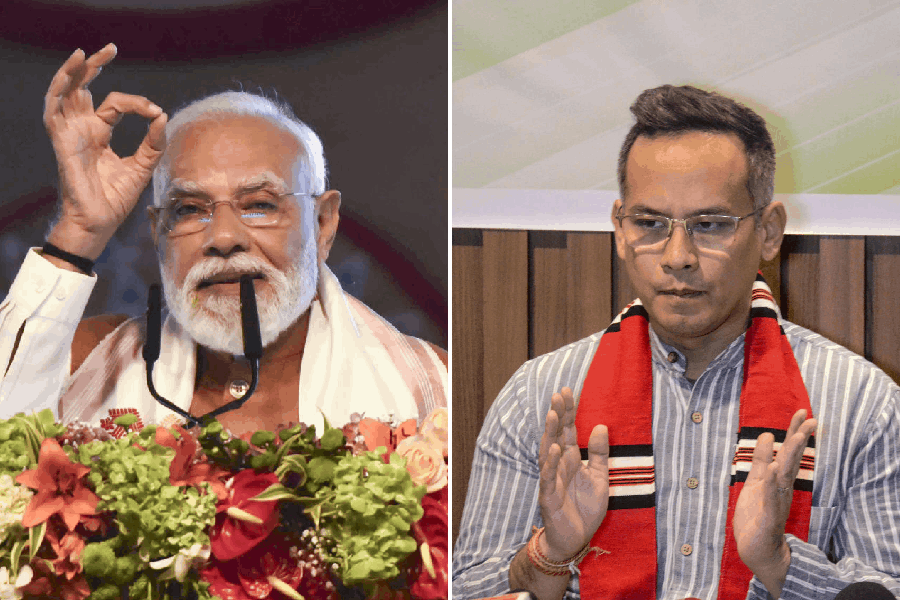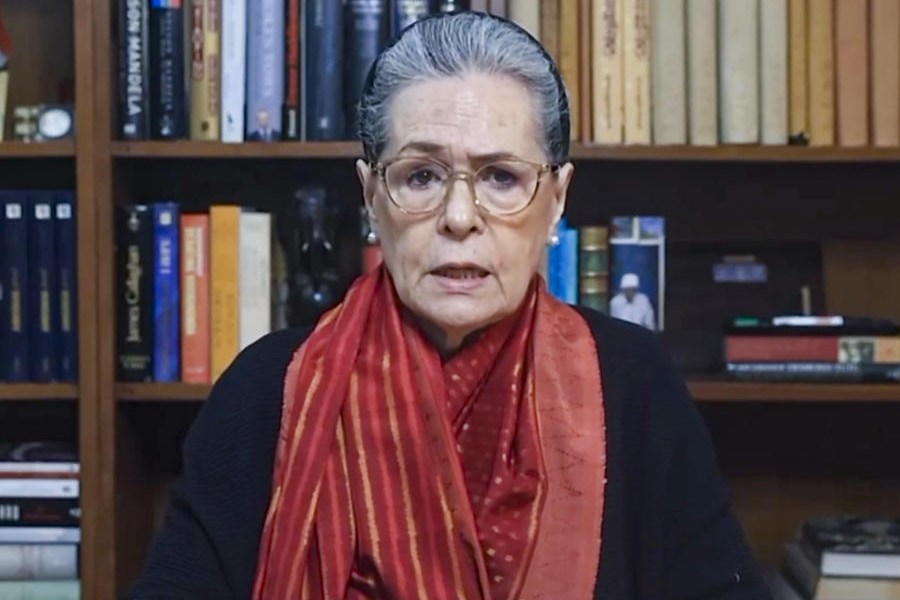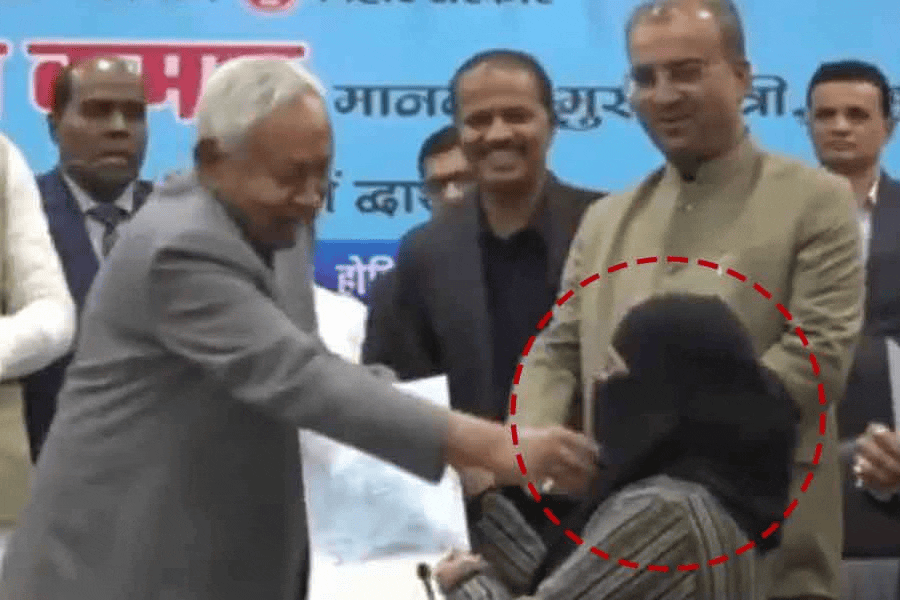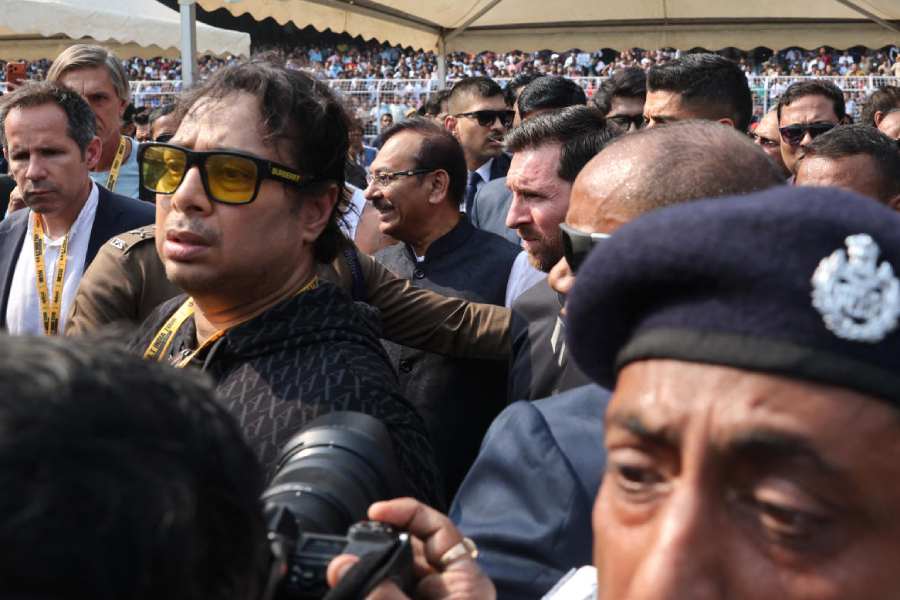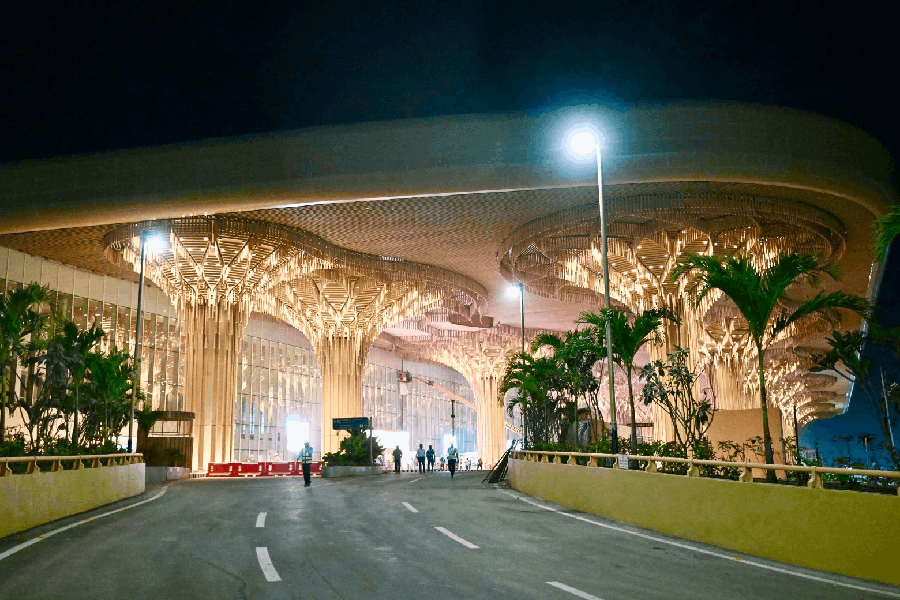.jpg)
New Delhi, March 11: The mesmerising magic of Narendra Modi, combined with a robust organisational machinery helmed by Amit Shah, enabled the BJP to secure its biggest ever victory in India's most populous state of Uttar Pradesh, sweep to power in the Himalayan state of Uttarakhand, deliver an impressive performance in the northeastern outpost of Manipur and be in the running even in Goa - the saffron spread halted only in Punjab where the Congress managed to win a clear majority.
The BJP rank and file is most ecstatic with the Uttar Pradesh result, not only because it won a whopping 325 seats in the 403-member Assembly, exceeding the most optimistic estimates of pollsters and party leaders alike, but also because the victory brings to fruition the long-held Hindutva ideal of transcending caste identities by consolidation along communal lines.
The Samajwadi Party and the Bahujan Samaj Party, which dominated the state's politics for the last two decades, were decimated as a result --- the SP down to 47 seats and the BSP to 19. The Congress did not even make it to double digits, its gamble of forming a pre-poll alliance with the SP coming a cropper - at least in this election.
The BJP had won a clear majority only once before in the Uttar Pradesh Assembly, winning 221 seats at the height of the Ramjanmabhoomi agitation in 1991. This time round, the party surpassed that by more than 90 seats.

While Prime Minister Narendra Modi's popularity and newly minted pro-poor avatar - a la a saffron Santa Claus - certainly helped the BJP, that alone would not have delivered such a historic victory.
A combination of factors that included a meticulously crafted caste arithmetic in ticket distribution, a far from subtle communal polarisation campaign, a division of anti-BJP votes among the SP-Congress alliance and the BSP, tremendous hard work put in by the Shah-led army of party workers for several months before the elections, and a helpful media that amplified the BJP's message across the state also helped the party achieve its unprecedented win.
While BJP leaders might now insist that it was Modi's "inclusive" and "pro-poor" initiatives -- encapsulated in his " sabka saath sabka vikas" slogan - that got them the votes, the fact remains that the "sabka" sought to exclude the Muslims who form nearly 20 per cent of Uttar Pradesh's population and also stigmatised the Yadavs (among the OBCs) and the Jatavs (among the Dalits) - the two castes seen to be the backbone of the SP's and the BSP's base, respectively.
By not giving a single ticket to a Muslim, the BJP made it clear that it did not need to reach out to the community in any manner whatsoever to win an election. With Modi himself bringing in the " kabristan" versus "smashaan", and "Ramazan" versus "Diwali" motif into the election discourse, it was open licence to the party's local leaders to be more explicit in their campaign against "Muslim appeasement" - a theme that struck a chord in a state that had already been considerably polarised ahead of the 2014 elections.
The below-the-radar communal polarisation was combined with a shrewd eye on the caste factor, with BJP strategists being much more open in wooing the non-Yadav OBCs and the non-Jatav Dalits. This strategy is not new and goes back to the time when Rajnath Singh tried to bring in "quotas within quotas" to target sections that had not benefited enough from the post-Mandal empowerment of non-upper castes.
Under Amit Shah, this strategy was fine-tuned, with the BJP tying up with small parties representing these castes as well as giving more tickets and positions to members of these castes. In that sense, the Uttar Pradesh election cannot be deemed a repudiation of Mandal politics but a fusion of Hindutva and caste that may come apart in the future but for now has proved stupendously successful.
Unlike Bihar, where the alliance between Nitish and Lalu (with a bit of help from the Congress) halted the BJP juggernaut, the division of votes between the SP and the BSP in Uttar Pradesh also helped the BJP tremendously. Although simple arithmetic does not always work in elections, a glance at today's poll results shows that the combined strength of the SP, BSP and the Congress would have considerably reduced the BJP's tally.
If Uttar Pradesh is undoubtedly the jewel in Modi's resplendent crown, the massive win in Uttarakhand - where the Congress and the BJP have so far been close contenders - only adds to its lustre.
In Manipur and Goa, the BJP and Congress are almost "neck and neck" - but the necks in these two opposite corners of India are not quite comparable.
In Manipur, the BJP was never a factor but has now won 21 seats, just seven fewer than the long incumbent Congress's 28. In Goa, on the other hand, the BJP has managed to win 14 seats - just four less than the Congress - despite battling anti-incumbency.
The only bad news for the BJP came in Punjab where the Congress under "captain" Amarinder Singh secured a much-bigger-than-expected win. But Punjab hasn't exactly spoiled BJP's mood for two reasons: one, it can be attributed to the anti-incumbency against the Akali Dal; and two, the Congress has stopped the Aam Aadmi Party which today poses a bigger threat to the BJP than a jaded Congress.
It is thus fair to say that today's results signify much more than just a change of government in Lucknow, Dehradun or Chandigarh. The BJP's spectacular winning streak, starting from the Lok Sabha elections in 2014 and reaching a pinnacle in Uttar Pradesh, signals the establishment of a "BJP system" in the politics of the country: a system dominated by a single party, half a century after the "Congress system" began to crack in the very same state of Uttar Pradesh.
For the first three decades after Independence, the Congress was the pre-eminent political party in both the Centre and the states. That single-party dominance received a blow in 1967 when the Congress failed to secure a majority in the Uttar Pradesh Assembly, winning 199 of the 425 seats. Charan Singh subsequently broke away from the Congress to head a coalition of parties ranging from the communists to the Jana Sangh.
Indira Gandhi recovered from the 1967 challenge and went on to keep the Congress flag flying for the next decade, and after the Janata interregnum, returned to power in 1980. After her assassination, Rajiv Gandhi came to power with over 400 seats in 1984. But these victories, under abnormal circumstances, only served to mask the steady erosion of the "Congress system" and the rise of a much more fractious, raucous but also a more democratic multi-party polity.
The string of minority or coalition governments at the Centre between 1989 and 2004 was a manifestation of the eclipse of the "Congress system" - with newer parties and forces emerging from both within the Congress's famed "umbrella" and outside it. The biggest of them was the BJP, which used the Ram mandir movement in the late 1980s to propel itself to the centre stage of both Uttar Pradesh and national politics.
Taking advantage of the anti-Congressism that was deeply embedded in the psyche of most other parties who had come of age during the years of Congress dominance, the BJP managed to come to power at the Centre as the head of the National Democratic Alliance, first in 1998 and then in 1999.
The Congress, which won just eight seats more than the BJP in 2004, got a fresh lease of life by skilfully constructing an alliance with an assortment of parties and seeking the outside support of the Left to head the United Progressive Alliance - an alliance that won a second term against the run of play in 2009.
Although Modi technically heads an NDA government at the Centre, and the BJP has said it will include its small allies in the new government in Lucknow, the truth is that the coalition era in Indian politics seems to have come to an end for now, and the BJP is in the process of sealing its single-party dominance as the Congress once did.
The immediate fallout of today's results is that the BJP will have no problems getting a person of its choice in Rashtrapati Bhavan, and overcoming the Rajya Sabha hurdle to legislation after the next round of Upper House polls in 2018.
After today's showing, the BJP and its supporters are also confident that Modi will win another term easily. Whether that happens or not, the countdown to 2019 has certainly begun.

.jpg)
